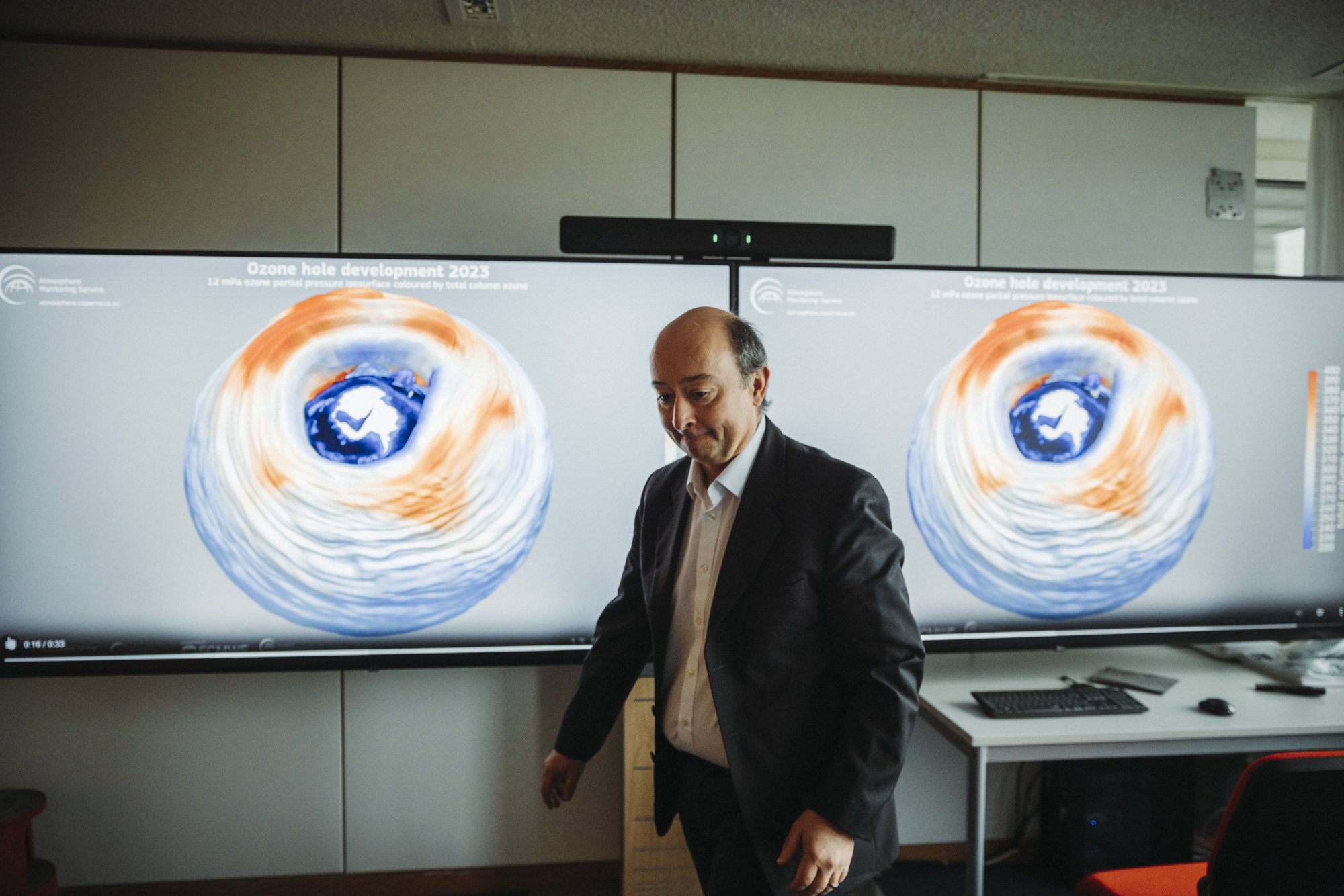»This European global observation program celebrates its 25th anniversary this year. Little known to the general public for a long time, it has come out of the shadows since the latest monthly bulletins announced record heat levels around the world.« (*translated from French using DeepL). A Foto-Essay about Jean-Noël Thépaut und Vincent-Henri Peuch.
Text: Laura Berny
Fotografie: Felix von der Osten
Jean-Noël Thépaut, Director of Copernicus services managed by the European Centre for Medium-Range Weather Forecasts (ECMWF) in Bonn.
WHO DOES WHAT
Copernicus, financed by the European member countries, groups together six services managed by different entities.
- Monitoring the state of the atmosphere (CAMS) and climate change (C3S), implemented by the European Centre for Medium-Range Weather Forecasts (ECMWF). Since the Brexit, Copernicus-related staff have been moved to Bonn.
- Terrestrial monitoring (forestry, water management, agriculture, food safety, etc.), managed by the European Environment Agency and the Joint Research Center (JRC).
- Marine environment monitoring, managed by Mercator Ocean International.
- Border surveillance: Frontex (external borders) and Emsa for maritime surveillance (fishing, pollution, law enforcement).
For its forecasts, Météo France uses weather and air quality data supplied by the European Centre for Medium-Range Weather Forecasts.
If you look at the weather information on your phone, the data came through Copernicus.
From its geostationary orbit, Sentinel-4 provides information on a wide range of trace gases and pollutants, to forecast and monitor air quality in Europe. It also contributes to to climate monitoring by recording ozone and solar radiation levels.
Budget
The Regulation of the European Parliament and of the Council of 28 April 2021 on the the European Union's space program a budget of
5.421 billion for the Copernicus program for the period 2021-2027.
Contributors
The 27 EU member countries plus Norway, Iceland, Lichtenstein. In early 2024, the United Kingdom will be able to join
the program in return for a hard-negotiated contribution of 616 million euros between now and 2027 (compared with 721 million if it had not left the Union).
Allocation
The budget is divided between services and institutions; the European Space Agency and Eumetsat (for satellites), the European Space Agency and Eumetsat (for the satellites). atmosphere monitoring and climate change (400 million), EU agencies (EEA, Emsa, Frontex, JRC, etc.) and Mercator Océan.









